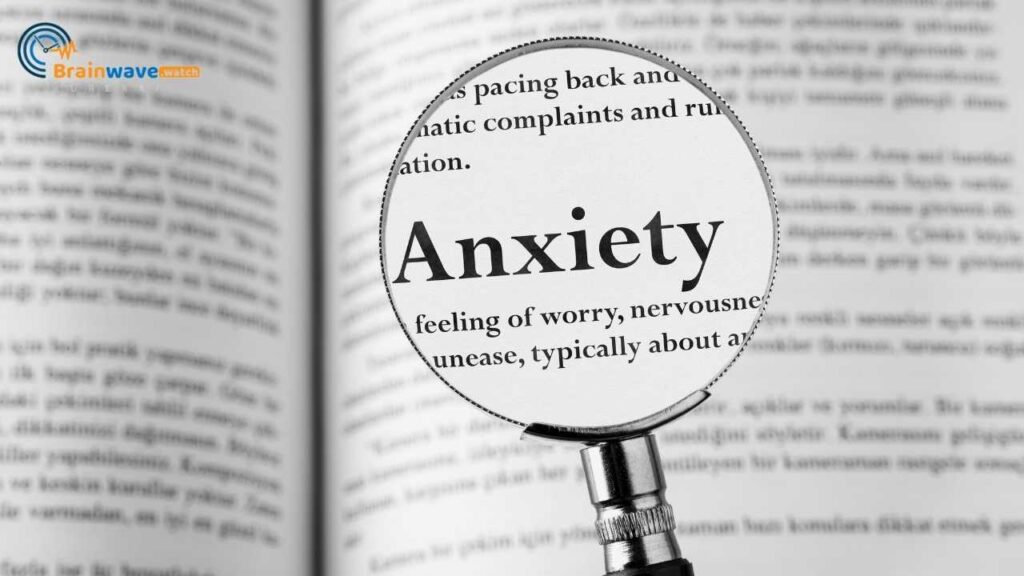Therefore, it is crucial to provide support and guidance to help them manage their emotions in a healthy way. In this blog post, we will explore various relaxation techniques and coping strategies tailored to your child’s needs. We will also discuss how seeking professional help and creating a positive environment can make a significant difference in reducing stress and anxiety in your child with special needs.
By implementing these strategies, you can help your child develop the skills they need to cope with stressful situations effectively. Let us dive into the details of how you can reduce stress and anxiety in your child with special needs.
Identifying Triggers
Stress and anxiety are common among children with special needs, and it’s important to identify the triggers that can cause these feelings in your child. By understanding what causes stress and anxiety in your child, you can develop effective coping strategies and relaxation techniques to help them manage their emotions.
Common triggers for stress and anxiety in children with special needs
There are several common triggers that can cause stress and anxiety in children with special needs. One of the most significant is changes in routine. Children with special needs often rely on a predictable schedule, so any disruption to their routine can be stressful. This could include changes to their school schedule, family routines, or even minor changes such as a different route to school.
Another common trigger is sensory overload. Children with special needs may be more sensitive to certain stimuli such as loud noises, bright lights, or strong smells. These sensory inputs can be overwhelming and lead to feelings of anxiety or stress.
Social situations can also be challenging for children with special needs. They may struggle with communication or have difficulty making friends which can lead to social isolation and feelings of loneliness.
How to identify triggers specific to your child
It’s essential to observe your child’s behavior closely so you can identify specific triggers that cause stress and anxiety for them. You may notice patterns of behavior that occur when they’re exposed to certain stimuli or situations.
It’s also important to communicate with your child’s teachers and therapists who work closely with them on a daily basis. They may be able to provide valuable insights into what triggers your child’s stress and anxiety.
Tracking your child’s behavior over time can also help you identify patterns of behavior that signal when they’re feeling stressed or anxious. You might consider keeping a journal where you record any changes in behavior, mood swings, sleep patterns, or physical symptoms like headaches or stomachaches.
By identifying the specific triggers that cause stress and anxiety in your child, you’ll be better equipped to develop effective coping strategies tailored specifically for them. In the next section, we’ll explore some strategies for helping your child cope with stress and anxiety in healthy ways.
Read also: Identify and Address Sensory Seeking Behaviors in Your Child
Coping Strategies
Coping strategies are essential tools for children with special needs to manage their stress and anxiety. Coping strategies can be tailored to your child’s unique needs, which is especially important since every child is different. By developing effective coping strategies, you can help your child feel more in control of their emotions and reduce the likelihood of negative behaviors.
1. Tailoring coping strategies to your child’s needs
When it comes to coping strategies, there is no one-size-fits-all approach. Every child with special needs has different triggers that cause stress and anxiety. Therefore, it is crucial to tailor coping strategies to meet your child’s specific needs.
One way to identify the most effective coping strategies for your child is by observing their behavior when they are stressed or anxious. Do they become agitated, withdrawn, or have difficulty communicating? Once you have identified your child’s triggers and reactions, you can begin developing a set of personalized coping strategies.
Some examples of effective coping strategies include deep breathing exercises, visual aids such as picture schedules or social stories, sensory activities like playing with clay or fidget toys, and physical exercises like jumping on a trampoline or going for a walk.
2. Incorporating coping strategies into the daily routine
Once you have developed a set of personalized coping strategies for your child, it is essential to incorporate them into their daily routine. Consistency and repetition are key factors in making these techniques a habit that your child can rely on when they feel overwhelmed.
To make these techniques part of their everyday routine, try incorporating them into structured activities such as mealtime or bedtime routines. You might also consider creating a visual schedule that includes time for relaxation exercises throughout the day.
It’s important to remember that developing new habits takes time and patience. Encourage your child every step of the way and celebrate small successes along the journey.
Read also: Which Interventions Reduce Anxiety in Autistic People?
Relaxation Techniques
Relaxation techniques are a great way to reduce stress and anxiety in children with special needs. There are several types of relaxation techniques that you can use to help your child feel calm and relaxed. Here are some examples:
Types of relaxation techniques
- Progressive muscle relaxation: This technique involves tensing and relaxing different muscle groups, one at a time. You can start with the feet and work your way up to the head, asking your child to tense each muscle group for a few seconds before releasing the tension.
- Guided imagery: This technique involves using mental images to help your child relax. You can guide your child through a peaceful scene, such as a beach or a forest, encouraging them to imagine all the sights, sounds, and smells.
- Deep breathing: This technique involves taking slow, deep breaths from the diaphragm. You can ask your child to place their hand on their stomach and breathe in deeply through their nose, feeling their stomach rise. Then they can exhale slowly through their mouth.
- Yoga: Yoga is an ancient practice that combines physical postures with breathing exercises and meditation. There are many yoga poses that are beneficial for reducing stress and anxiety in children.
How to practice relaxation techniques with your child
When practicing relaxation techniques with your child, it’s important to create a calm and comfortable environment. Find a quiet space where you won’t be interrupted and make sure your child is wearing comfortable clothing.
Before starting the relaxation exercise, explain what you’ll be doing and why it’s important. Encourage your child to ask questions if they’re unsure about anything.
Modeling is also important when practicing relaxation techniques with your child. Show them how to do each exercise by doing it yourself first. Then encourage them to try it out for themselves.
It’s also important to practice together regularly so that relaxation becomes a habit for both you and your child. Aim for at least 10 minutes of relaxation practice per day.
Creating a Positive and Supportive Environment
Children with special needs often require a positive and supportive environment to help them cope with stress and anxiety. A positive environment can help reduce the impact of negative triggers that may cause stress or anxiety in your child. As a parent or caregiver, you have the power to create an environment that is safe, comfortable, and nurturing for your child.
Importance of a Positive and Supportive Environment
The importance of creating a positive and supportive environment cannot be overstated. Children with special needs are more susceptible to stress and anxiety due to their unique challenges. A positive environment can help mitigate these challenges by providing a sense of security, predictability, and routine for your child.
A positive environment also includes positive interactions with family members, caregivers, peers, and teachers. Encouraging positive social interactions can help boost your child’s self-esteem and confidence while reducing feelings of isolation or loneliness.
Examples of ways to create a positive and supportive environment include:
- Establishing routines: Routines provide structure for your child’s day-to-day life. They can help reduce uncertainty and provide comfort in knowing what comes next.
- Celebrating successes: Celebrating even small successes can help boost your child’s self-esteem and motivation.
- Creating a sensory-friendly space: For children with sensory processing disorders, creating a space that is comfortable for them can be crucial in reducing stress levels.
- Encouraging independence: Allowing your child to make choices within safe boundaries can promote independence while also reducing feelings of frustration or powerlessness.
Read also: How to Build Resilience in Children with Social-Emotional Needs
How to Involve Family Members and Caregivers
Creating a positive and supportive environment requires collaboration between family members and caregivers. Communication is key when it comes to ensuring consistency across different environments.
Tips for involving family members and caregivers include:
- Communicate regularly: Regular communication between family members, caregivers, therapists, teachers, etc., can help ensure consistency in approach.
- Provide resources: Share resources such as books or articles on coping strategies or relaxation techniques so everyone is on the same page.
- Encourage participation: Encourage family members or caregivers to participate in therapy sessions or other activities related to your child’s care.
Read also: Counseling for Parents of Special Needs Children: Strategies and Support
Conclusion
In conclusion, reducing stress and anxiety in children with special needs is crucial for their overall well-being. As parents and caregivers, it is important to identify triggers that may cause stress and anxiety in your child, develop effective coping strategies tailored to their needs, and practice relaxation techniques together. However, seeking professional help and support when needed should also be a priority.
Remember that you are not alone in this journey, and there are resources available to assist you in providing the best care for your child. Creating a positive and supportive environment for your child can also go a long way in reducing their stress levels. By fostering an environment that promotes positivity, understanding, and acceptance, you can help your child feel safe and secure.
Remember to take care of yourself as well, as caring for a child with special needs can be challenging at times. With the right tools and support system in place, you can help your child thrive despite any challenges they may face.







